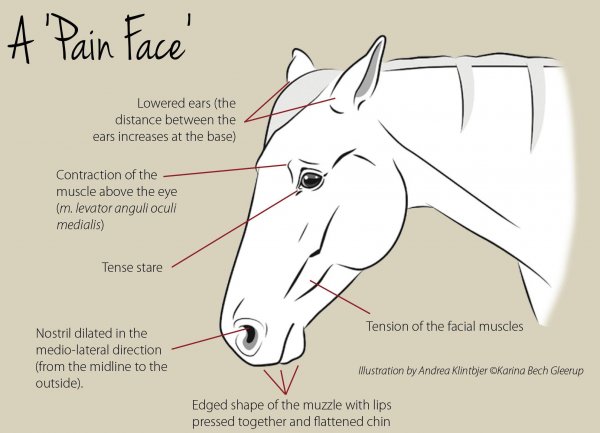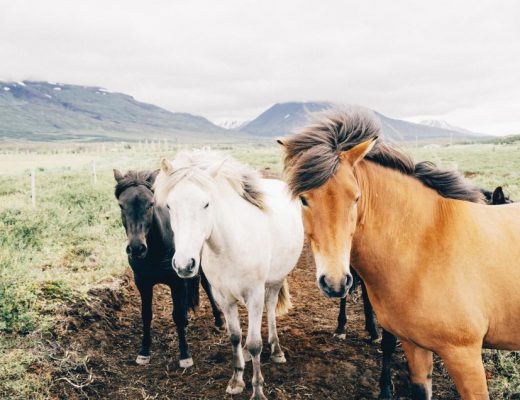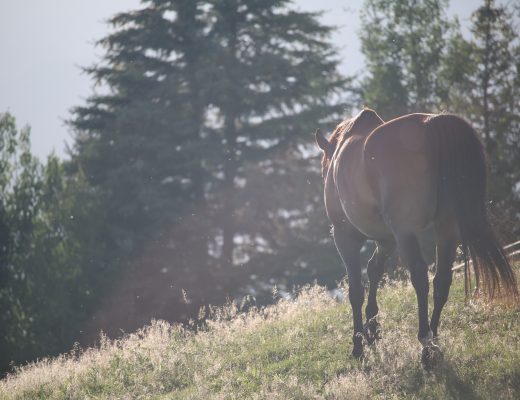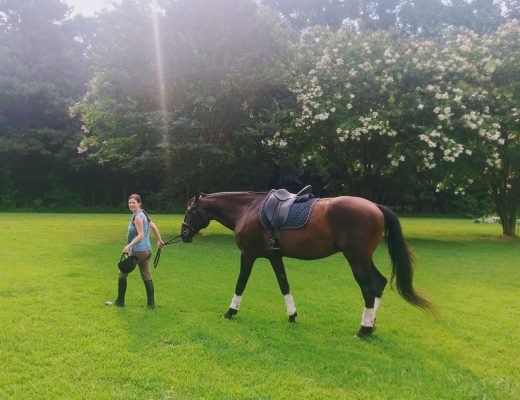One of the more emotionally difficult parts of my job is working with horses who are experiencing pain. It is especially challenging when they are suffering from chronic pain.
I get to see a wide range of horses every week and have the opportunity to observe many things, even with horses who I don’t actually work on.
I worked with two horses recently who had “the pain face.” Both have been dealing with chronic pain for a long time. Both tried very hard for me during their trims, but it was obvious they are in pain. That is the kind of experience that weighs on you long after you leave the appointment.
Seeing and understanding equine pain is knowledge I’ve come by through intuition, observation, and noticing patterns. My eyes have been opened to what a horse is communicating with their body. This is a difficult topic that I still struggle with on a regular basis. How do I communicate to owners what I see? How can I approach this conversation knowing it is extremely deep, sensitive, and emotional? I can tell when clients are not ready to deal with their horse’s pain. I hesitate to force the issue….there is no easy way here. In the end, I have to do what I think is ethically best. Sometimes that means waiting a little longer until the owner is ready to hear. Other times, I can no longer continue working for the client.
List of Resources to Better Understand:
See the composite pain scale, horse grimace scale, and images here.
See an equine comfort pain scale with photos here.
Another format of the equine pain scale here.
Brief description of each part of the face showing pain with photos here.
Above are good resources if you are wondering how your horse is doing.
Some good questions to ask yourself are:
- Are they not seeming themselves?
- Does something seem off?
- Are they exhibiting any negative, difficult, or emotional behaviors?
- Are they struggling to do something that you ask or need of them?
- What has changed over the past year, the past six months?
- Is a chronic diagnosis getting worse?
- Do they have more bad days than good days?
- What is a “good” day for them and is that a good quality of life?
- Is their pain being managed?
- Is your fear of saying goodbye or seeing them suffer keeping you from making a decision in their best interest?
Pay attention. Listen to them. Be curious. Gather information.
You also have to consider how horses are designed by nature – biologically, they are designed to hide pain rather than show it outright. But their bodies always tell the story if you know what to look for.
This is especially important when it’s time to consider end of life timing and options for your beloved equine friend. Don’t wait too long to start having these conversations with your horse and your vet.
Questions for yourself, whether your horse is starting their end of life transition or perfectly healthy and fabulous:
- What financial, emotional, practical resources do you need to be able to say goodbye, when it is time?
- What would you like your horse’s last day to look like?
- What ritual, ceremony, or special time would honor your horse and your partnership together?
- What part of them would you like to keep? Mane and tail hair?
- Where do you want to say goodbye?
- How can you allow the herd to say their farewells, too?
- What happens if there is an emergency? Can you have a plan in place for that, too?
I hope this is helpful. It’s hard to think about, but it’s easier to plan now than in the moment.





No Comments